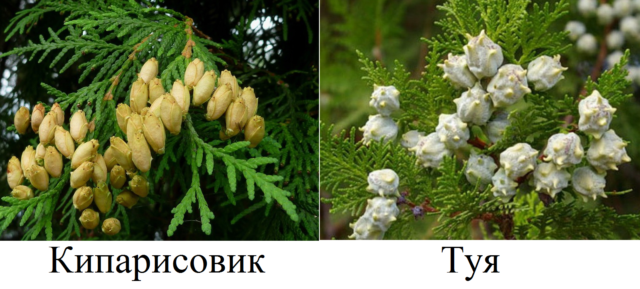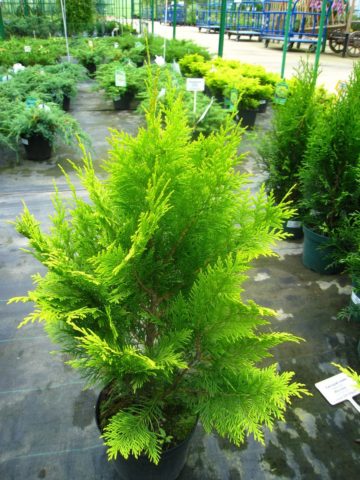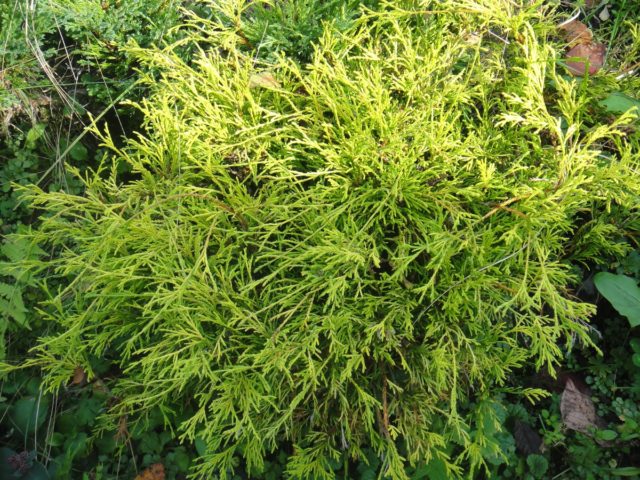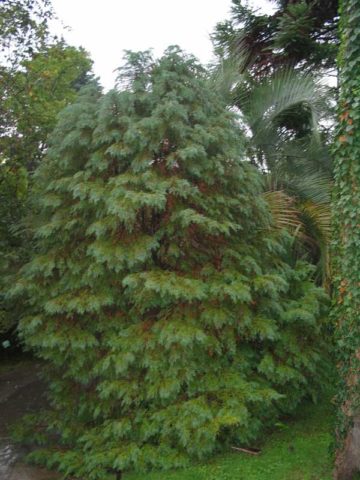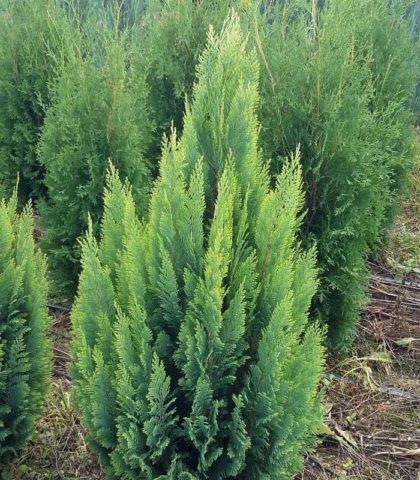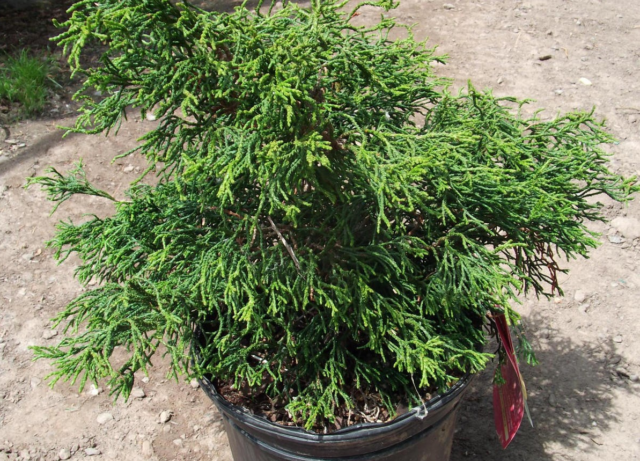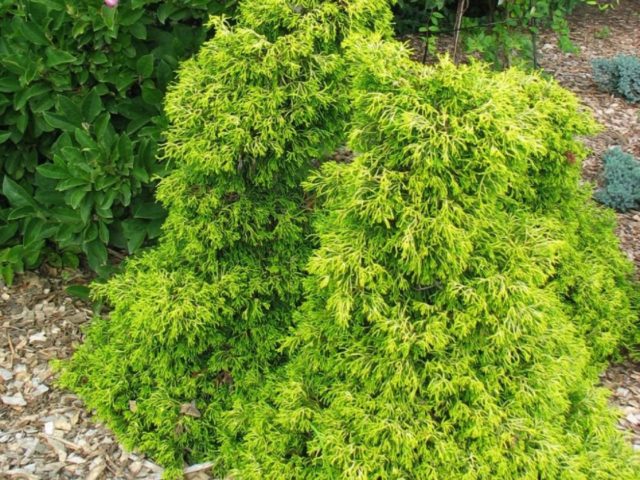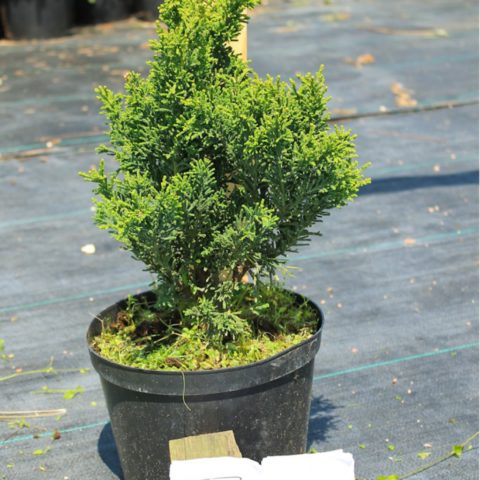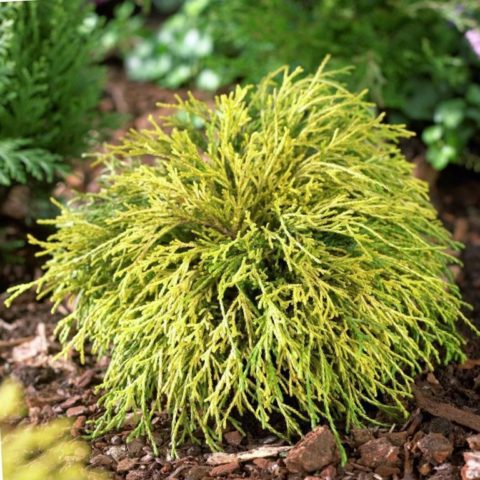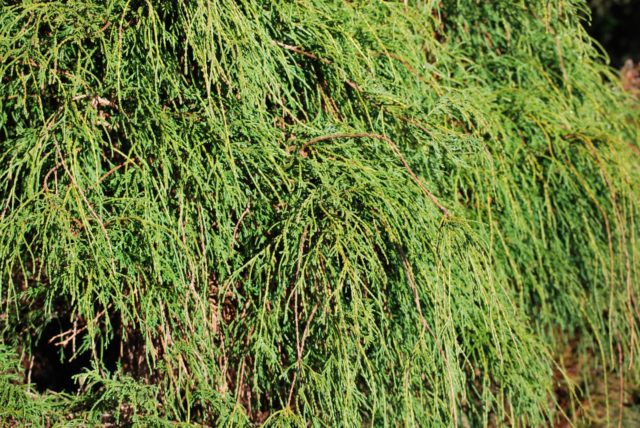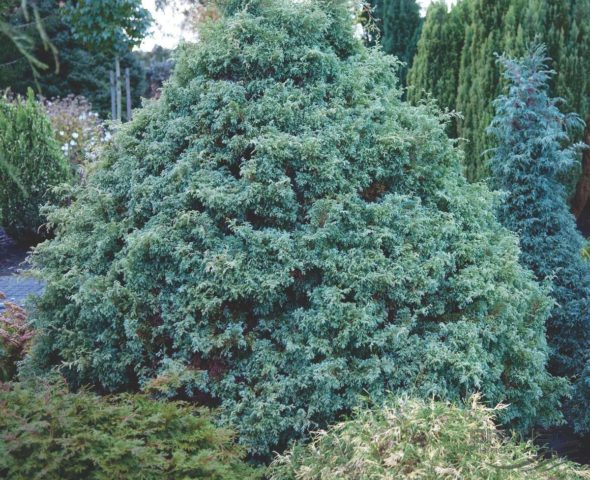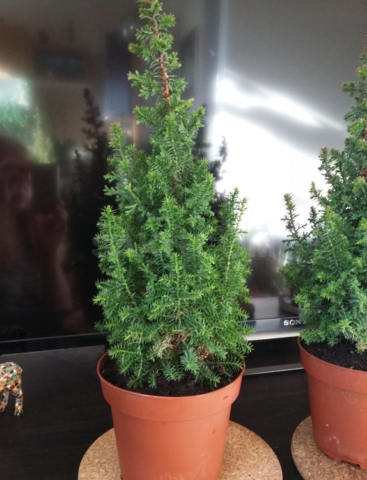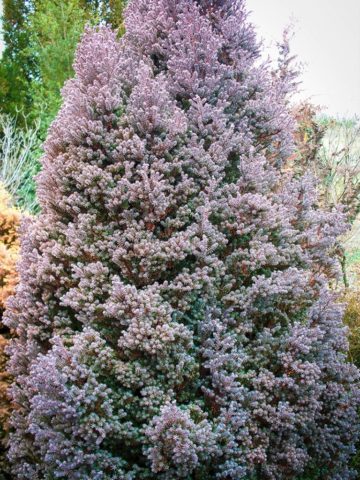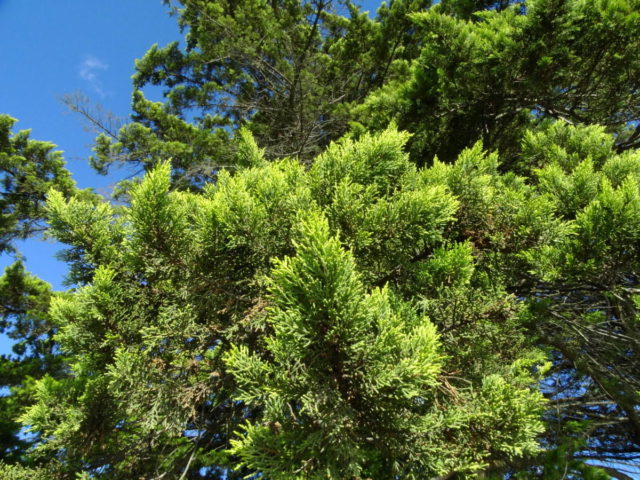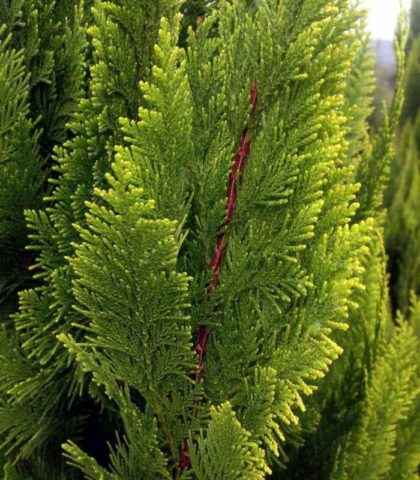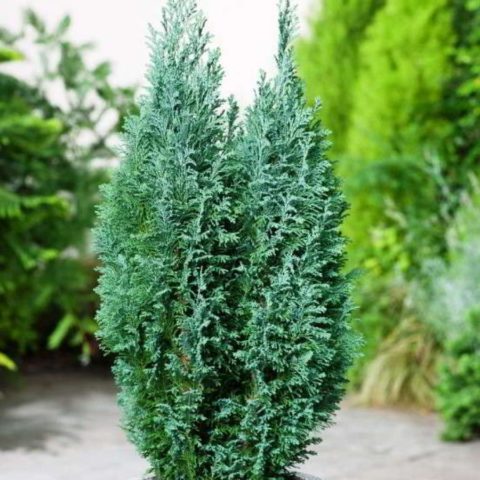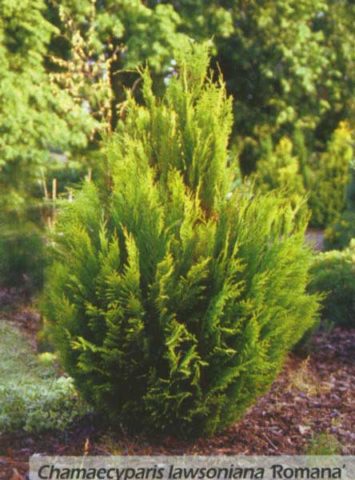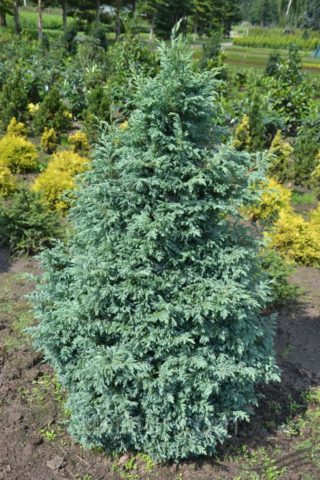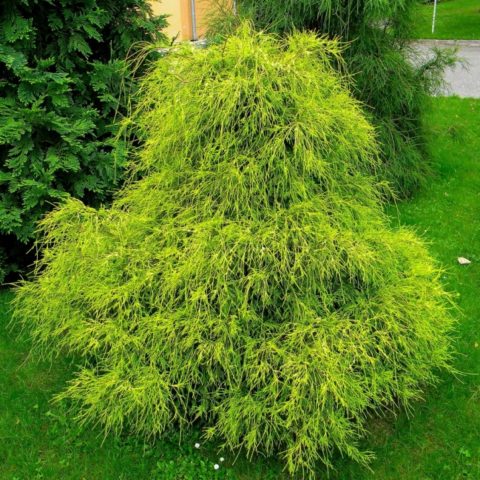Content
Cypress is a representative of evergreen conifers, which is widely used in landscape design. His homeland is the forests of North America and East Asia. Depending on the place of growth, the shape and color of the shoots, several types of cypress trees are distinguished. Most of them have a decorative look. They tolerate severe winters well, need fertile and moist soils. To make a choice in favor of one of the trees, you need to study the photos, types and varieties of cypress.
What is the difference between thuja and cypress
Cypress is a tall, long-lived tree. Outwardly it resembles a cypress, however, it has thickened shoots and small cones with a diameter of 12 mm with 2 seeds. The crown is pyramidal with drooping branches. Leaves are green, pointed and tightly pressed. In young plants, the leaf plate is acicular, in adults it becomes scaly.
Cypress is often confused with another evergreen tree - thuja. Plants belong to the same Cypress family and are very similar in appearance.
A comparison of the characteristics of these plants is shown in the table:
Thuja | Cypress |
Genus gymnosperms conifers | Genus of evergreen monoecious trees |
Shrub, less often a tree | Large tree |
Reaches 50 m | Grows up to 70 m |
Average life span - 150 years | Life span 100-110 years |
Scale-like crisscross needles | Scale-like opposite needles |
Oval cones | Round or elongated bumps |
Branches are arranged horizontally or upward | Drooping shoots |
Delivers a strong ethereal scent | The smell is mild, has sweetish notes |
Found in the middle lane | Prefers subtropical climate |
Cypress in landscape design
Cypress tolerates urban conditions, grows in the shade and partial shade. In the heat, its growth slows down. The tree is sensitive to moisture deficiency in the soil and air, therefore, an irrigation system is thought out before planting. Cypress is suitable for decorating a recreation area of country houses, sanatoriums, recreation centers, parks.
Cypress needles are highly decorative. The color depends on the variety, it can be from light green to deep dark. Plants with golden and bluish-smoky needles are especially appreciated.
Due to its high winter hardiness and unpretentiousness, cypress is successfully grown in the middle lane. The trees have different sizes depending on the variety. Tall hybrids are more often used in single plantings. Primroses and perennial grasses grow well under them.
Cypress is used for single and group plantings. A gap of 1 to 2.5 m is maintained between plants. Trees are suitable for creating a hedge, then between them they stand 0.5–1 m.
Under indoor conditions, Lawson's cypress and pea are grown. The plants are planted in small containers and pots. They are placed on windows or verandas on the north side. To keep the tree from growing, it is grown using the bonsai technique.
Types and varieties of cypress
The genus Cypress combines 7 species. They all grow in the subtropical zones of Asia and North America. They are also cultivated in warm temperate climates. All varieties are frost-resistant.
Lawson's cypress
The species is named after the Swedish botanist P. Lavson, who became its discoverer.Lawson cypress wood is prized for its light weight, pleasant aroma and resistance to decay. It is used in furniture production, as well as for the manufacture of plywood, sleepers, and finishing materials. In recent years, the area of distribution of this species has significantly decreased due to massive felling.
Lawson's cypress is a tree up to 50-60 m high. The trunk is straight, in girth it reaches 2 m. The crown is pyramidal in shape, the top is drooping, curved. The species is resistant to diseases and pests. Sunburn in spring. Prefers sandy moist soils. It is recommended to plant it in the European part of Russia to create hedges.
Varieties of cypress trees of the Lawson species with names, photos and descriptions:
- Aurea... The tree is cone-shaped and of medium vigor. Reaches a height of 2 m. The branches are dense, green. Young growths are beige in color.
- Fletchery... The tree is columnar. For 5 years, the variety reaches a height of 1 m. Shoots are raised, greenish-blue, with needles and scales. Prefers fertile soil and lighted areas.
- Alumigold... Compact cone-shaped variety. The tree grows rapidly, in 5 years it reaches 1.5 m. Shoots are straight, young shoots are yellow, eventually become bluish-gray. The variety is unpretentious in terms of soil quality and moisture.
Blunt cypress
In nature, the blunt-leaved cypress grows in Japan and on the island of Taiwan. It is planted next to temples and monasteries. The species has a wide conical crown. The tree grows up to 40 m, the trunk diameter is up to 2 m. The decorative properties are preserved throughout the year. Frost resistance is above average, after a harsh winter it can freeze slightly. Decorativeness is preserved all year round. Poorly tolerates urban conditions, grows better in a forest-park strip.
Dull-leaved cypress varieties:
- Coraliformis... A dwarf variety with a pyramidal crown. For 10 years it grows up to 70 cm. The branches are strong, dark green, twisted, resemble corals. The variety prefers fertile soil with high humidity.
- Tatsumi Gold... The variety grows slowly, has a spherical, flat, openwork shape. Shoots are powerful, firm, curled, greenish-golden color. Demanding on soil moisture and fertility.
- Dras... An original variety with a narrow conical crown. It grows up to 1 m in 5 years. The needles are green-gray, the shoots are straight and thick. Suitable for Japanese gardens and small areas.
Pea cypress
Under natural conditions, the species grows in Japan at an altitude of 500 m. The pea cypress is considered by the Japanese to be the habitat of the gods. The tree has a wide pyramidal shape. In height reaches 50 m. Crohn openwork with horizontal shoots. The bark is brownish-red, smooth. Prefers moist soil and air, as well as sunny areas protected from the wind.
Popular varieties of pea cypress:
- Sangold... Dwarf variety with a hemispherical crown. For 5 years it reaches a height of 25 cm. The shoots are hanging, thin. The needles are green-yellow or golden. Demanding on the quality of the soil is moderate. Grows well in sunny and rocky areas.
- Phillifera... Slow-growing variety up to 2.5 m high. Spreading crown, in the form of a wide cone. Branches are thin, long, filiform at the ends. The needles are dark green with scales. The variety is demanding on the quality and moisture content of the soil.
- Squarroza... The variety grows slowly, in 5 years it reaches a height of 60 cm. With age, it takes the form of a small tree. The crown is wide, conical in shape. The needles are soft, blue-gray. Grows best in fertile, moist soil.
Cypress
The species was introduced to Europe from North America. In nature, it is found in wet swampy areas. The wood is durable, with a pleasant smell. It is used for the manufacture of furniture, ships, joinery.
The tree has a narrow cone-shaped crown and brown bark.It reaches a height of 25 m. The unusual shape of the crown, bright color and cones give the plant decorative qualities. Dwarf varieties are grown in containers. The species prefers sandy or peaty soils of high humidity. It develops worst of all in dry clay soil. Landing in shady places is allowed.
The main varieties of cypress are:
- Konica... A dwarf variety with a pin-shaped crown. The tree grows slowly. Shoots are straight, subulate needles, bent down.
- Endelaiensis... A dwarf plant, reaches a height of no more than 2.5 m. Shoots are short, straight, densely located. The needles are green with a bluish undertone.
- Red Star... A hybrid with a height of 2 m and a width of 1.5 m. The crown is dense and compact, in the form of a pyramid or column. The color of the needles changes depending on the season. In the spring and summer, it is greenish-blue, with the onset of cold weather, purple shades appear. Grows well in the sun, is able to tolerate light partial shade.
Formosian cypress
The species grows in the highlands on the island of Taiwan. The trees reach a height of 65 m, the girth of the trunk is 6.5 m. The needles are green with a blue tint. Some specimens live for over 2,500 years.
The wood is durable, not susceptible to insect attack, and gives off a pleasant aroma. It is used to build temples and houses. An essential oil with a relaxing scent is obtained from this species.
The Formosan species is characterized by weak winter hardiness. It is grown at home or in greenhouses.
Cypress varieties for the Moscow region
Cypress is successfully grown in the suburbs. The tree is planted in partial shade or in a sunny area. Fertile loamy or sandy loam soil is prepared for the plant. Work is carried out in the fall before the onset of cold weather or in the spring after the snow melts.
For successful cultivation, the plant is cared for. It is watered regularly, especially during drought. Needles are sprayed every week. Mulching the soil with peat or chips helps to prevent evaporation of moisture. Until mid-summer, the tree is fed 2 times a month with complex fertilizer for conifers. Dry, broken and frozen shoots are pruned.
Photos, types and varieties of cypress for the Moscow region:
- Lawson's cypress of the Yvonne variety... Variety with a conical crown. For 5 years it reaches a height of 180 cm. The needles are golden in color, which remains in winter. Grows on moist, humus soils. The needles are scaly, yellow in the sun, and green when grown in the shade. The color persists throughout the winter. The intensity of the color depends on the moisture and fertility of the soil.
- Lawson's cypress varieties Columnaris... A fast-growing tree in the form of a tall column. At the age of 10 years, the variety reaches 3-4 m. The branches grow in a vertical direction. The needles are gray-blue. The variety is unpretentious to the soil and weather conditions, it is able to grow in polluted areas. Differs in high winter hardiness.
- Lawson cypress of Elwoodi variety... Slow-growing tree with a columnar crown. For 10 years it reaches a height of 1–1.5 m. The needles are thin, deep blue in color. Shoots are upright. The variety is unpretentious in the soil, but requires constant watering. Ideal for small gardens, can be used in place of a Christmas tree in winter.
- Lawson's cypress of the Roman variety... Hybrid with a narrow ovoid crown. The top with pronounced feathers. It develops slowly, in 5 years it reaches 50 cm. Shoots are erect, densely arranged. The color is bright, golden yellow, persists for the winter. The tree is characterized by increased winter hardiness, undemanding to watering and soil quality. Suitable for creating bright landscape compositions and specimen plantings.
- Pea varieties Boulevard... The cypress grows slowly and forms a narrow conical crown. For 5 years it grows up to 1 m.The needles are soft, do not prick, have a bluish-silvery color. The tree is grown in open areas.
- Pea varieties of Filifer Aureya... Shrub with a wide conical crown. It reaches a height of 1.5 m. The branches are hanging, rope-like. The needles are yellow. The variety is unpretentious, grows in any soil.
Conclusion
The considered photos, types and varieties of cypress will help you choose the right option for your garden. The plant is distinguished by its unpretentiousness and resistance to frost. It is used for single plantings, hedges and more complex compositions. The variety is selected taking into account the weather conditions of the region, soil and place for cultivation.
